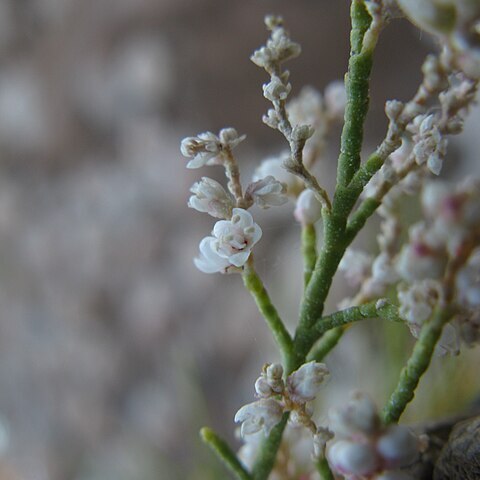Dioecious tree, 1.5-5.0 m high; bark brown, later grey. Leaves vaginate, with small herbaceous point, ± 1.25 mm long. Inflorescence less dense, 20-60 mm long racemes. Bracts leaf-like. Flowers unisexual, pentamerous. Sepals entire, outer 2 ovate-acute, inner trullate-ovate. Petals persistent, inequilateral, ovate to ± elliptic, creamy white. Disc fleshy, dark-coloured, 5-lobed. Stamens 5, antisepalous, inserted on periphery of disc. Male flowers: stamens alternating with lobes (disc hololophic) or each lobe deeply bipartite with each half lobe fusing to the adjacent filament (disc paralophic). Female flowers: half lobes of bipartite discal lobes very strongly fused to adjacent filaments, filaments seemingly broad-based (disc synlophic). Flowering time July-Oct.(-May).
Willowy, usually dioecious, evergreen tree, up to 9 m tall, with brownish grey bark, rough with transverse scars, often with pink to reddish galls. Leaves overlapping, scale-like, pale grey. Flowers in massed panicles, minute, scented, petals whitish to grey, anthers pink.
A shrub or small tree. It grows 5-9 m tall. It has a deep taproot. The leaves are as sharp pointed scales. They cover the young stem. The flowers are in a mass on the upper parts of the branches. The fruit is abut 6 mm long.
Willowy tree with slender, drooping branches, to 9 m. Leaves scale-like. Flowers in massed panicles, minute, pink to grey.

